IIT JEE Main Chemistry Study Materials All Chapters
- Some Basic concepts of Chemistry
- Gaseous State
- Solid and Liquid State
- Atomic Structure
- Chemical Bonding & Molecular Structure
- Chemical Thermodynamics
- Solution
- Chemical Equilibrium
- Ionic equilibrium
- Redox Reactions
- Electrochemistry
- Chemical Kinetics
- Surface Chemistry
- Classification of Elements & Periodicity in Properties
- General Principles & Process of Isolation of Metals
- Hydrogen
- S – Block Elements (Alkali & Alkaline Earth Metals)
- P – Block Elements
- D & F Block Elements
- Coordination Compounds
- Environmental Chemistry
- Purification & Characterization of Organic Compounds
- Some Basic Principles of Organic Chemistry
- Isomerism
- Alkanes
- Alkenes & Alkynes
- Aromatic hydrocarbons
- Organic Compounds Containing Halogens
- Alcohols , Phenols & Ethers
- Aldehyde and Ketones
- Carboxylic Acids
- Polymers
- Biomolecules
- Chemistry in Everyday Life
- Principles Related to Practical Chemistry
JEE Main 2021 Chemistry Syllabus
The chemistry section of JEE Main comprises numerical as well as theoretical questions. In JEE Main 2019, Chemical Bonding in Organic Chemistry, Halogen Derivative in Organic Chemistry and Ionic Equilibrium etc were given the highest weightage. The entire chemistry syllabus in JEE Main is spread over three sections.
- Physical Chemistry
- Organic Chemistry
- Inorganic Chemistry
Take a look at JEE Main January 2020 Paper 1 Syllabus for Chemistry below.
Units | Topics |
|---|---|
Section A: Physical Chemistry | |
| Unit 1: Some Basic Concepts In Chemistry |
|
| Unit 2: States Of Matter | Classification of matter into solid, liquid and gaseous states. |
| |
| Liquid State: Properties of liquids – vapour pressure, viscosity and surface tension and effect of temperature on them (qualitative treatment only). | |
| |
| Unit 3: Atomic Structure |
|
| |
| Unit 4: Chemical Bonding And Molecular Strucure | Kossel – Lewis approach to chemical bond formation, concept of ionic and covalent bonds. |
| Ionic Bonding: Formation of ionic bonds, factors affecting the formation of ionic bonds; calculation of lattice enthalpy. | |
| |
| Unit 5: Chemical Thermodynamics | Fundamentals of thermodynamics: System and surroundings, extensive and intensive properties, state functions, types of processes. |
| |
| Unit 6: Solutions |
|
| Unit 7: Equilibrium | Meaning of equilibrium, concept of dynamic equilibrium. |
| |
| Ionic equilibrium: Weak and strong electrolytes, ionization of electrolytes, various concepts of acids and bases (Arrhenius, Bronsted – Lowry and Lewis) and their ionization, acid-base equilibria (including multistage ionization) and ionization constants, ionization of water, pH scale, common ion effect, hydrolysis of salts and pH of their solutions, solubility of sparingly soluble salts and solubility products, buffer solutions. | |
| Unit 8: Redox Reactions And Electrochemistry | Electronic concepts of oxidation and reduction, redox reactions, oxidation number, rules for assigning oxidation number, balancing of redox reactions. |
| Eectrolytic and metallic conduction, conductance in electrolytic solutions, specific and molar conductivities and their variation with concentration: Kohlrausch’s law and its applications. | |
| |
| Unit 9 : Chemical Kinetics |
|
| Unit 10: Surface Chemistry | Adsorption- Physisorption and chemisorption and their characteristics, factors affecting adsorption of gases on solids – Freundlich and Langmuir adsorption isotherms, adsorption from solutions. |
| |
Section B: Inorganic Chemistry | |
| Unit 11: Classificaton Of Elements And Periodicity In Properties | Modem periodic law and present form of the periodic table, s, p, d and f block elements, periodic trends in properties of elements atomic and ionic radii, ionization enthalpy, electron gain enthalpy, valence, oxidation states and chemical reactivity. |
| Unit 12: General Principles And Processes Of Isolation Of Metals | Modes of occurrence of elements in nature, minerals, ores; Steps involved in the extraction of metals – concentration, reduction (chemical and electrolytic methods) and refining with special reference to the extraction of Al, Cu, Zn and Fe; Thermodynamic and electrochemical principles involved in the extraction of metals. |
| Unit 13: Hydrogen |
|
| Unit 14: S – Block Elements (Alkali And Alkaline Earth Metals) | Group – 1 and 2 Elements: General introduction, electronic configuration and general trends in physical and chemical properties of elements, anomalous properties of the first element of each group, diagonal relationships. |
| Preparation and properties of some important compounds – sodium carbonate and sodium hydroxide; Industrial uses of lime, limestone, Plaster of Paris and cement; Biological significance of Na, K, Mg and Ca. | |
| Unit 15: P – Block Elements | Group – 13 to Group 18 Elements General Introduction: Electronic configuration and general trends in physical and chemical properties of elements across the periods and down the groups; unique behaviour of the first element in each group. |
Groupwise study of the p – block elements
| |
| UNIT 16: D – And F – BLOCK ELEMENTS | Transition Elements: General introduction, electronic configuration, occurrence and characteristics, general trends in properties of the first row transition elements – physical properties, ionization enthalpy, oxidation states, atomic radii, colour, catalytic behaviour, magnetic properties, complex formation, interstitial compounds, alloy formation; Preparation, properties and uses of K2 Cr2 O7 and KMnO4 . |
| Inner Transition Elements: Lanthanoids – Electronic configuration, oxidation states and lanthanoid contraction. | |
| Actinoids – Electronic configuration and oxidation states. | |
| Unit 17: Co-Ordination Compounds |
|
| Unit 18: Environmental Chemistry |
|
Section C: Organic Chemistry | |
| Unit 19: Purification And Characterisation Of Organic Compounds | Purification – Crystallization, sublimation, distillation, differential extraction and chromatography – principles and their applications |
| Qualitative analysis – Detection of nitrogen, sulphur, phosphorus and halogens. | |
| Quantitative analysis (basic principles only) – Estimation of carbon, hydrogen, nitrogen, halogens, sulphur, phosphorus. | |
| Calculations of empirical formulae and molecular formulae; Numerical problems in organic quantitative analysis. | |
| Unit 20: Some Basic Principles Of Organic Chemistry | Tetravalency of carbon; Shapes of simple molecules – hybridization (s and p); Classification of organic compounds based on functional groups: – C = C – , – C h C – and those containing halogens, oxygen, nitrogen and sulphur; Homologous series; Isomerism – structural and stereoisomerism. |
| Nomenclature (Trivial and IUPAC) Covalent bond fission – Homolytic and heterolytic: free radicals, carbocations and carbanions; stability of carbocations and free radicals, electrophiles and nucleophiles. Electronic displacement in a covalent bond – Inductive effect, electromeric effect, resonance and hyperconjugation. | |
| Unit 21: Hydrocarbons | Classification, isomerism, IUPAC nomenclature, general methods of preparation, properties and reactions. Alkanes – Conformations: Sawhorse and Newman projections (of ethane); Mechanism of halogenation of alkanes. |
| Alkenes – Geometrical isomerism; Mechanism of electrophilic addition: addition of hydrogen, halogens, water, hydrogen halides (Markownikoff’s and peroxide effect); Ozonolysis and polymerization. | |
| Alkynes – Acidic character; Addition of hydrogen, halogens, water and hydrogen halides; Polymerization. | |
| Aromatic hydrocarbons – Nomenclature, benzene – structure and aromaticity; Mechanism of electrophilic substitution: halogenation, nitration, Friedel – Craft’s alkylation and acylation, directive influence of functional group in mono-substituted benzene. | |
| Unit 22: Organic Compounds Containing Halogens | General methods of preparation, properties and reactions; Nature of C-X bond; Mechanisms of substitution reactions. |
| Uses; Environmental effects of chloroform & iodoform. | |
| Unit 23: Organic Compounds Containing Oxygen | General methods of preparation, properties, reactions and uses. |
| Alcohols, Phenols And Ethers |
|
| Carboxylic Acids | Acidic strength and factors affecting it. |
| Unit 24: Organic Compounds Containing Nitrogen |
|
| Unit 25: Polymers |
|
| UNIT 26: Biomolecules |
|
| UNIT 27: Chemistry in Everyday Life | Chemicals in medicines – Analgesics, tranquilizers, antiseptics, disinfectants, antimicrobials, antifertility drugs, antibiotics, antacids, antihistamins – their meaning and common examples. |
| Chemicals in food – Preservatives, artificial sweetening agents – common examples. Cleansing agents – Soaps and detergents, cleansing action. | |
| UNIT 28: PRINCIPLES RELATED TO PRACTICAL CHEMISTRY | Detection of extra elements (N,S, halogens) in organic compounds; Detection of the following functional groups: hydroxyl (alcoholic and phenolic), carbonyl (aldehyde and ketone), carboxyl and amino groups in organic compounds. |
| |
| Chemistry involved in the titrimetric excercises – Acids bases and the use of indicators, oxalic-acid vs KMnO4, Mohr’s salt vs KMnO4. | |
| Chemical principles involved in the qualitative salt analysis: Cations – Pb2+ , Cu2+, AI3+, Fe3+, Zn2+, Ni2+, Ca2+, Ba2+, Mg2+, NH4+. Anions- CO3 2-, S2-, SO4 2-, NO2–, NO3–, CI –, Br, I. (Insoluble salts excluded). | |
| Chemical principles involved in the following experiments: | Enthalpy of solution of CuSO4 |
| Enthalpy of neutralization of strong acid and strong base. | |
| Preparation of lyophilic and lyophobic sols. | |
| Kinetic study of reaction of iodide ion with hydrogen peroxide at room temperature. | |
Best Books for JEE Main Chemistry
Physical Chemistry
1. Physical Chemistry for Competitions (OP Tandon)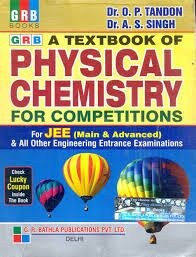
One of the most popular books for Physical Chemistry, OP Tandon’s book is used incessantly for all engineering entrance exams. The book covers all topics in detail. You’ll gain both in case of theoretical and practical type questions. The practice papers and solved questions are a huge benefit in this book. The best thing is, you also get OP Tandon books for Organic and Inorganic Chemistry.
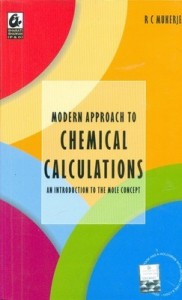 2. Modern Approach to Chemical Calculations (RC Mukherjee)
2. Modern Approach to Chemical Calculations (RC Mukherjee)
This one’s by far the best bet for Physical Chemistry. Well-explained topics and concepts, and varied styles of numerical questions in this book make it a one-stop solutions for JEE preparation of Physical Chemistry. The entire JEE syllabus for Physical Chemistry can be easily covered with this book. Other beneficial features include revision notes and solved questions in the end. The mole concept has been described well and questions are explained using the same.
3. Physical Chemistry – P. Bahadur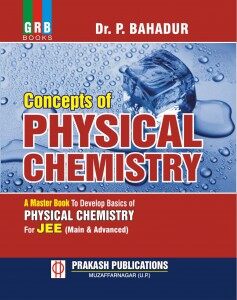
It’s one of the most highly recommended books for physical chemistry and for numerical problems for any engineering entrance exam. The set of problems in the book are very exhaustive. The problems available are from state level engineering entrance exams to JEE for each chapter in the book.
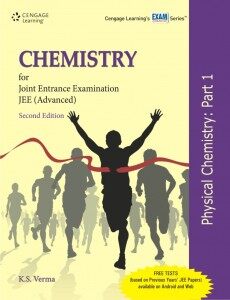 4. Physical Chemistry – K.S. Verma (Cengage Publication)
4. Physical Chemistry – K.S. Verma (Cengage Publication)
Physical Chemistry for JEE is a comprehensive guide for students who are studying for the Physical Chemistry for JEE. While its illustrative and solved examples will facilitate easy mastering of the concepts and their applications, an array of solved problems will expose the students to the variety and nature of questions that they can expect to face in the examination. The coverage and features of this series of books make it highly useful for all those preparing for JEE Advanced and aspiring to become engineers.
Inorganic Chemistry
1. A Textbook of Inorganic Chemistry (RK Gupta)
The theory is very well-explained for all the topics and chapters. There is good scope for revision and quick recaps with every chapter. Practise questions are available at the end of every chapter as well as the end of the book too, hence strengthens students’ preparation. The type of questions included are comprehension, reasoning and assertion type of questions, MCQ’s, short answers-questions and analytical questions.
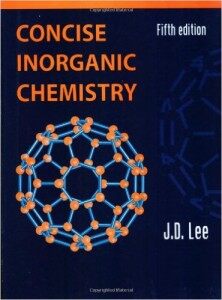 2. Concise Inorganic Chemistry (JD Lee)
2. Concise Inorganic Chemistry (JD Lee)
JD Lee’s Chemistry book is among the most popular for Inorganic Chemistry, not just for JEE, but for other engineering entrances as well. The essentials are well-covered, and the practice questions are in abundance. The format of questions in the book includes MCQs, assertive -type and single choice questions. The practical and theory parts in the book are well-balanced too.
Organic Chemistry
1. Organic Chemistry for Competitions (OP Tandon)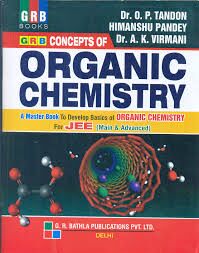
The book gives you a lot of scope to learn and revise. The text is well-formatted and revised to match the current trends of of the examination. The text is precise and short; hence, easy to understand. You can know and practise the most recent questions for Organic Chemistry for JEE. The type of questions included in the practice part include Multiple Choice Questions, reasoning and matching options.
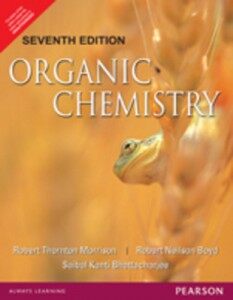 2. Organic Chemistry (Morrison and Boyd)
2. Organic Chemistry (Morrison and Boyd)
The book covers almost all the topics in the JEE syllabus in good detail. You can strengthen your knowledge on Molecular Structure and other important topics from Organic Chemistry. Students prefer preparing Organic Chemistry for JEE with Morrison and Boyd owing to the interesting way in which even the most complex topics are made understandable. There are no substantial questions for practice purposes in the book, but it is ideal for understanding the concepts of Organic Chemistry for JEE.
3. Organic Chemistry – Himanshu Pandey (GRB Publication)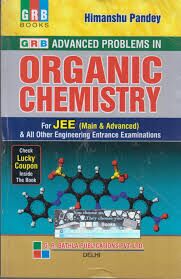
This is a comprehensive guide for Organic Chemistry and is essential for both the JEE Main and Advanced exams. Every chapter contains the entire spectrum of objective questions as adopted by IIT JEE. Teachers and students will find all type of problems that covers the core curriculum of typical organic chemistry. Maximum problems in this book are designed by combining two or more concepts. Answering them need thinking and deep knowledge.
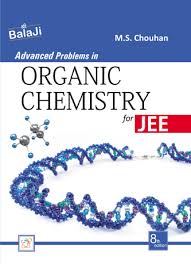 4. Organic Chemistry – M. S. Chauhan (Balaji Publication)
4. Organic Chemistry – M. S. Chauhan (Balaji Publication)
The book aims at three problematic key areas of the organic chemistry – understanding of mechanics, visualization of structures and problem solving. The reactions are well illustrated and elaborate answers with stepwise explanations of their mechanisms are provided. These are combined with concise text helping students to acquire the fundamental concepts of the subject.
JEE Main Topicwise Weightage for Chemistry
Below is JEE Main Chemistry important topics and number of questions asked in the examination.
| Topics | No of Questions | Marks |
|---|---|---|
| Transition Elements and Coordination Chemistry | 3 | 12 |
| Periodic table and Representative Elements | 3 | 12 |
| Thermodynamics And Gaseous State | 2 | 8 |
| Atomic Structure | 2 | 8 |
| Chemical Bonding | 2 | 8 |
| Chemical And Ionic Equilibrium | 2 | 8 |
| Solid State And Surface Chemistry | 2 | 8 |
| Nuclear Chemistry And Environment | 2 | 8 |
| Mole Concept | 1 | 4 |
| Redox Reaction | 1 | 4 |
| Electrochemistry | 1 | 4 |
| Chemical Kinetics | 1 | 4 |
| Solution and Colligative Properties | 1 | 4 |
| General Organic Chemistry | 1 | 4 |
| Stereochemistry | 1 | 4 |
| Hydrocarbon | 1 | 4 |
| Alkyl Halides | 1 | 4 |
| Carboxylic Acid and their Derivatives | 1 | 4 |
| Carbohydrates, amino acid and Polymers | 1 | 4 |
| Aromatic Compounds | 1 | 4 |